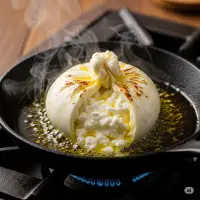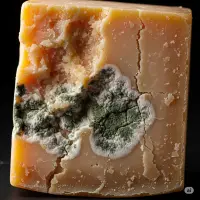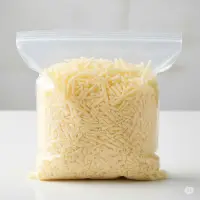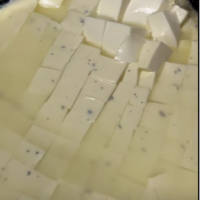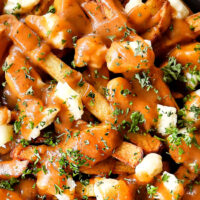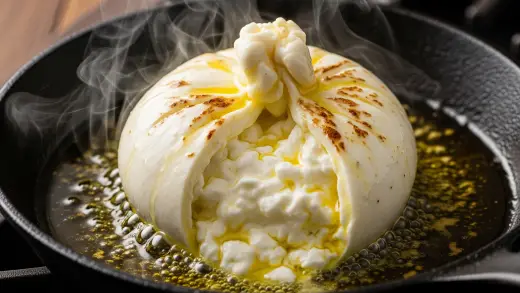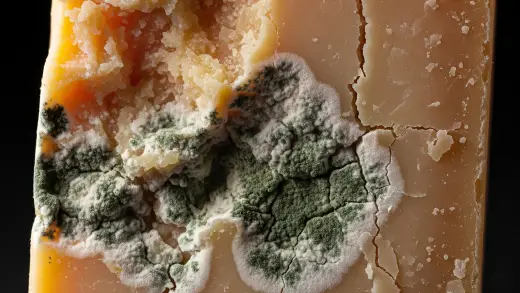Yes, the crust or rind on Brie cheese is absolutely edible. In fact, it’s a significant part of the cheese and contributes to its overall flavor and texture.
Did you know that the fuzzy white coating on your Brie is meant to be eaten? This seemingly unassuming layer, the rind, is a defining characteristic of Brie cheese, the beloved soft and creamy delight from France.
The central question for many Brie enthusiasts and newcomers alike is clear: Can you eat the Brie rind?
The answer is a resounding yes! The Brie rind is not only edible but often enhances the overall flavor and texture experience of the cheese.
This blog post will delve into the fascinating world of Brie rind, exploring what it is, why you should consider eating it, addressing common concerns, offering tips on how to enjoy it, and highlighting when it’s best to steer clear.

Can You Eat the Crust on Brie Cheese?
Yes, the crust (or rind) on Brie cheese is absolutely edible.
In fact, the rind is a natural part of the cheese and is formed by the mold cultures (typically Penicillium candidum) that are used in the cheesemaking process. This mold is safe to eat and contributes to the flavor and texture of the Brie.
Here’s what you should know about the Brie rind:
- It’s safe to eat: The white, bloomy rind is made of a beneficial mold.
- It adds flavor: The rind often has a subtle, earthy, and sometimes slightly mushroomy flavor that complements the creamy interior.
- It provides texture: The rind offers a slightly firmer texture compared to the soft cheese inside.
- It’s part of the experience: Many cheese lovers believe that eating the Brie with the rind provides the complete flavor profile and intended experience of the cheese.
While it’s perfectly acceptable to eat the rind, personal preference varies. Some people find the taste or texture of the rind unappealing and choose to remove it.
However, if you’re trying Brie for the first time, it’s recommended to try it with the rind to see if you enjoy it.
Why You Should Eat Brie Rind (The Benefits)?
Eating the Brie rind offers several advantages that contribute to a more complete and nuanced culinary experience:
Flavor Enhancement
The rind often imparts subtle, earthy, and sometimes mushroomy notes that complement the rich, buttery interior of the Brie. These flavors add complexity and depth to each bite.
Texture Contrast
The slightly firmer texture of the rind provides a pleasant contrast to the soft, meltingly smooth interior of the Brie. This textural interplay can be particularly enjoyable.
Traditional Consumption
In many cultures, especially in France where Brie originates, consuming the rind is considered an integral part of the traditional Brie experience. It’s how the cheese is meant to be enjoyed.
No Food Waste
From a sustainability perspective, eating the entire cheese, including the rind, minimizes food waste and allows you to appreciate the cheesemaker’s complete creation.
Addressing Common Concerns About Brie Rind
It’s natural to have questions and even some hesitation about eating the rind of a cheese. Let’s address some common concerns:
Is Brie rind mold? Yes, the white, fuzzy coating is indeed a mold, primarily Penicillium candidum.
However, it’s a beneficial, edible mold that is intentionally introduced during the cheesemaking process to ripen the cheese and develop its characteristic flavor and texture. This is different from the undesirable mold that grows on spoiled food.
Does it taste bad? Typically, the Brie rind has a mild, slightly earthy flavor that complements the creamy interior. However, in overripe Brie, the rind can sometimes develop a slightly bitter or more pungent taste.
Is it safe to eat? Yes, the Brie rind is generally safe to eat for most people. It is a natural part of the intended product.
What if I don’t like the texture? Personal preference varies, and it’s perfectly acceptable if you find the texture of the rind unappealing. You can certainly remove it from your portion on your plate if you prefer.
Ammonia smell
A strong ammonia smell is a sign that the Brie is likely overripe. While a faint hint of ammonia can sometimes be present in well-aged Brie, a strong odor suggests that the cheese may be past its prime, and it might be best to avoid the rind or the entire cheese in this case.
How to Eat and Serve Brie with the Rind?
Eating and serving brie with the rind is an easy process that allows you to enjoy the cheese as intended. Here’s a guide:
Here’s how you can eat and serve Brie with the rind:
Eating Brie with the Rind
Let the Brie sit out for a bit until it feels soft. This makes it taste better.
Cut the round Brie like a pie, into slices. If you have a slice already, just cut it smaller.
Eat the whole slice, the soft inside and the outside part too. The outside has a different taste, maybe a little like dirt or mushrooms. Eating it all together tastes good.
Don’t just eat the soft inside and leave the outside. You’ll miss some of the flavor.
You can eat Brie with other yummy things like:
- Crunchy bread or crackers.
- Sweet fruits like apples, grapes, or berries.
- Hard nuts like walnuts.
- Sweet stuff like jam or honey.
- Meats like salami.
Serving Brie with the Rind
- You can put a whole small round of Brie out, or cut a big one into slices.
- Brie looks nice in the middle of a plate with other cheeses and snacks.
- You can cut the Brie into slices before people eat, so it’s easy for them to take a piece with the rind.
- You can even bake the whole Brie with the rind on. It gets soft and gooey inside, and the rind helps it stay together. You can put sweet or savory things on top of baked Brie.
- If you bake it, you can make little cuts on the top of the rind. This looks nice and makes it easier to cut.
- If people don’t know Brie, you can tell them that the outside part is okay to eat and tastes good with the inside.
So, you should eat the outside of the Brie! Serve it soft, cut into slices, and enjoy it with other tasty foods.
When NOT to Eat Brie Rind (Signs of Spoilage)?
While the typical white rind is safe and delicious, there are certain signs that indicate the Brie has spoiled, and the rind should not be consumed:
Discoloration
Avoid Brie with a rind that has developed gray, blue, or green patches. These colors indicate the growth of undesirable molds. A slightly brownish hue in very ripe Brie might be acceptable, but significant discoloration is a warning sign.
A flaky rind that is no longer consistently white can also be an indication of spoilage.
Strong Ammonia Smell
As mentioned earlier, a strong and pungent ammonia smell is a clear indicator that the cheese is past its prime and should not be eaten.
Changes in Texture
If the rind feels excessively slimy or the overall texture of the cheese has drastically changed (e.g., becoming overly hard or having an unusual consistency), it’s best to err on the side of caution and discard it.
Conclusion
For most people, the Brie rind is not only edible but a delightful component that contributes significantly to the overall enjoyment of this classic cheese.
Its subtle flavors and textural contrast enhance the creamy interior, offering a more complete and traditional tasting experience.
We encourage you to be adventurous and try the rind if you haven’t before. You might just discover a new layer of appreciation for this wonderful cheese.
Now, we’d love to hear from you! Do you typically eat the Brie rind, or do you prefer to remove it? Share your preferences and any tips you have in the comments below.




